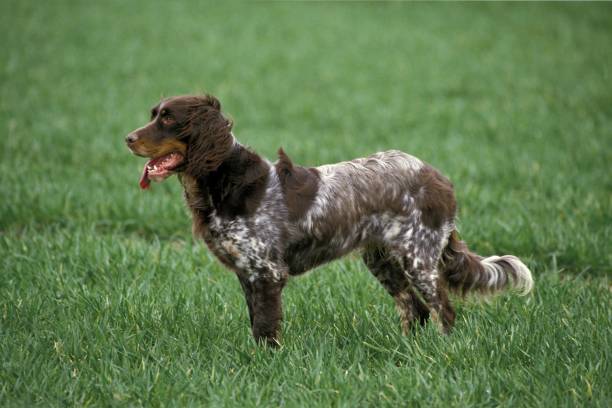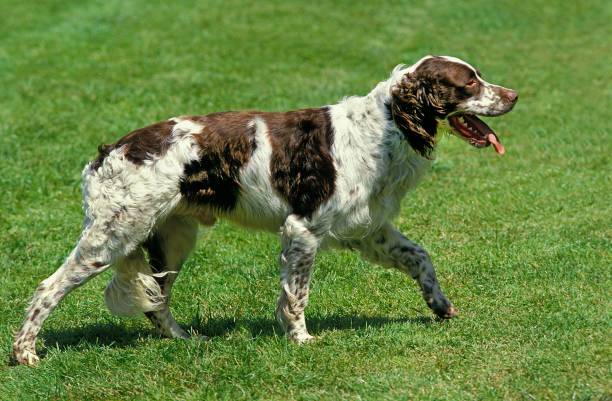French Spaniel

Breed History:
The French Spaniel (Épagneul Français) is a versatile hunting dog with a noble legacy tracing back to the Middle Ages. It is believed to have descended from bird dogs used by French nobility, especially for falconry and net hunting. Over time, the breed was refined to become a skilled pointer and retriever, known for its endurance and adaptability in the field.
Though nearly driven to extinction in the 19th century due to the popularity of English breeds, the French Spaniel was revived by dedicated breeders, particularly Father Fournier, in the early 20th century. Today, it is recognised for its calm temperament, reliable work ethic, and strong connection to its hunter-companion roots. Though rare outside of France, the breed is cherished among enthusiasts for its loyalty and versatility.
|
Gender |
Height |
Weight |
|
Male |
56–61 cm |
24–27 kg |
|
Female |
55–59 cm |
20–23 kg |
Size – Medium-Large
Life Expectancy: 10–12 years

Breed Appearance:
The French Spaniel is a well-proportioned, muscular dog with a noble and athletic build. It has a slightly rounded head, long ears that fall close to the cheeks, and expressive amber or brown eyes that exude intelligence and warmth. The coat is medium-length, slightly wavy or flat, and adorned with feathering on the chest, belly, ears, and tail.
Its coat colour is typically white with brown or liver patches, often marked with ticking or roaning. The French Spaniel’s elegant stance and powerful stride reflect its function as a working gundog capable of traversing rugged terrain with ease.
Breed Type – Family/Hunting Companion:
Bred as a hunting companion, the French Spaniel is known for its calm demeanour, intelligence, and deep loyalty. It thrives in an active home where it can feel included in daily routines. Friendly and gentle with children and other pets, this breed makes an excellent family dog when provided with enough stimulation and companionship.
Although bred for the field, it is not overly excitable indoors and tends to have a balanced energy level. Its people-oriented nature makes it happiest when around its family. It is not a natural guard dog but may alert to unfamiliar sounds, remaining more watchful than aggressive.

Training:
The French Spaniel is intelligent, eager to please, and responsive to positive reinforcement, making it relatively easy to train, even for less experienced dog owners. It excels in obedience, field training, and dog sports thanks to its versatility and cooperative nature.
Early socialisation is important to help the breed adjust well to different environments, people, and animals. Harsh training techniques should be avoided, as the French Spaniel is sensitive and may shut down under pressure. Consistency, kindness, and rewards yield the best results in training this adaptable breed.
Health & Care:
The French Spaniel is generally a healthy and robust breed, with few breed-specific hereditary issues. Some potential concerns include:
-
Hip dysplasia
-
Ear infections due to long, floppy ears
-
Progressive retinal atrophy (rare)
-
Bloat (gastric torsion) occurs if overfed or exercised too soon after meals
Regular vet checkups, a balanced diet, and maintaining a healthy weight are key to longevity. Keeping ears clean and dry is essential to prevent infection, particularly after swimming or bathing.

Living Conditions:
The French Spaniel adapts well to various living situations, from country homes to city apartments, as long as it receives enough daily exercise and mental stimulation. It prefers an active household with access to outdoor activities, such as hiking, running, or hunting. A securely fenced yard is ideal for allowing safe play and exploration.
Though content to relax indoors, this breed does not do well in isolation and may become bored or anxious if left alone for extended periods. It thrives in homes where it can be a part of the family’s day-to-day life.
Exercise:
As a working spaniel, this breed requires daily physical and mental activity. Long walks, off-leash runs in safe areas, fetch, and scent work are all excellent forms of exercise. Its stamina and love of the outdoors make it an excellent companion for active individuals, hunters, or hikers.
Mental stimulation is equally important—training sessions, puzzle toys, or canine sports can help satisfy its active mind. Insufficient exercise can lead to restlessness or unwanted behaviours, so regular engagement is essential for a happy, well-behaved dog.
Grooming:
The French Spaniel's coat is relatively low-maintenance. Weekly brushing helps remove dirt, prevent matting in feathered areas, and reduce shedding. During seasonal shedding periods, brushing may need to be increased.
Baths should be given as needed, especially after outdoor activities. Regular cleaning of the ears is vital to prevent infection, and trimming the nails and brushing the teeth several times a week is recommended for overall hygiene. Inspect the coat regularly for ticks and debris if the dog spends a lot of time outdoors.

Advantages:
-
Calm, intelligent, and eager to please—ideal for active families
-
Good with children and other animals
-
Adaptable to both urban and rural settings
-
Low grooming needs compared to other spaniel breeds
-
Excellent scenting and retrieving abilities for hunting or dog sports
-
Loyal and affectionate without being overly needy
Disadvantages:
-
Needs regular physical and mental stimulation to prevent boredom
-
Can develop separation anxiety if left alone too often
-
Prone to ear infections due to long ears
-
May chase wildlife if not well-trained on recall
-
Requires consistent training and early socialisation
-
Relatively rare outside France—may be difficult to find from reputable breeders

